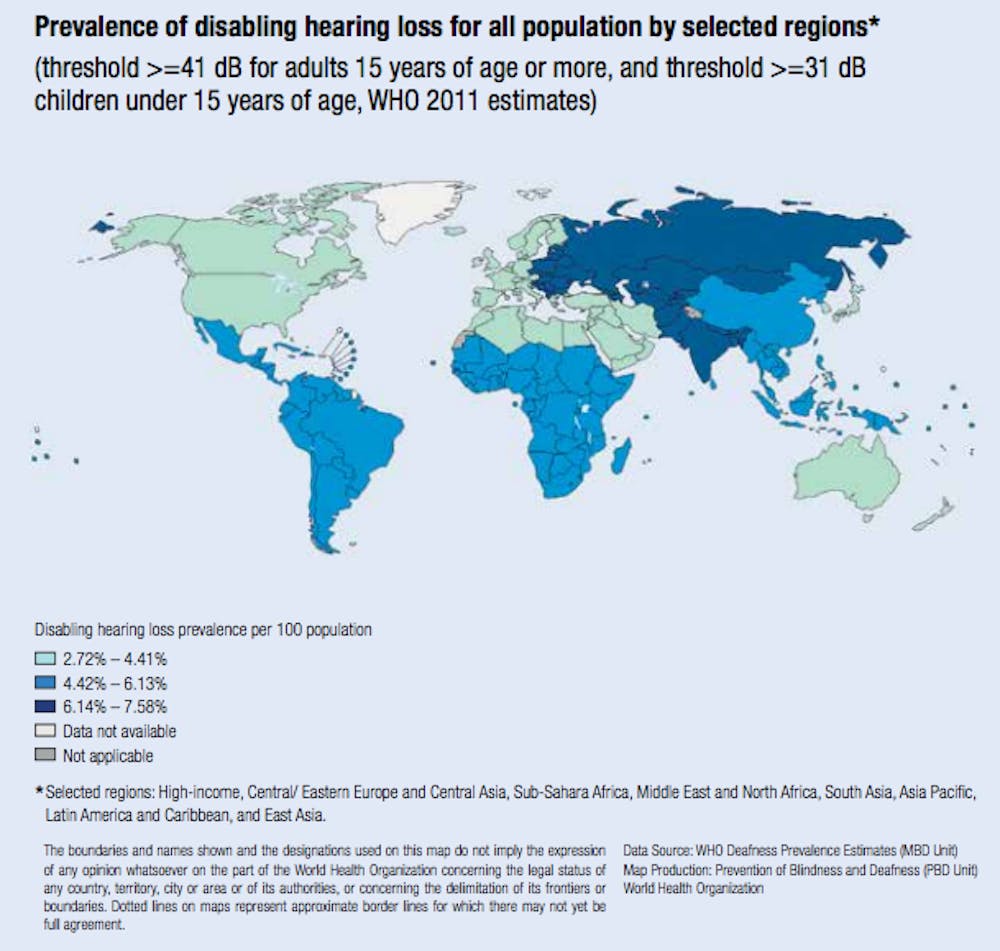About 1 in every 20 people in the world experience “disabling hearing loss” according to the World Health Organization. Caused by the death of the hair cells lining the cochlea of the inner ear, hearing loss in all forms is estimated to affect 15 percent of the world’s population. New research from the University’s Medical School has provided a stepping-stone to the regeneration of cochlear hair cells and the restoration of hearing.
Neuroscience and Cell Biology Prof. Jeffrey T. Corwin suggested that adaptations may be the reason why mammals, unlike many amphibians and birds, lack the ability to regenerate the hair cells responsible for hearing.
“These cells tend to be vulnerable to loud sound, so if you’re exposed to very loud sound for a long period of time, it can actually kill them off,” Corwin said. “The problem is that our ears only make these cells before we’re born, which is different from animals like chickens, frogs and fish, which can automatically replace the cells and hook them back up with nerves in as quickly as 10 days.”
Corwin and Benjamin R. Thiede, recent graduate of the University’s neuroscience graduate program, began to work with chickens in order to determine the force driving the regeneration of hair cells.
Within the cochlea, pitch is detected by the stereocilia of the hair cells, so named because the projections look like little hairs. The stereocilia are organized shortest to tallest so that the shortest cilia, located closest to the incoming sound, receive higher frequency waves and the tallest, located further inward, receive lower frequency waves. The stereocilia vibrate upon receiving sound waves and transduce the sound waves into a mechanical wave. This wave is received by the basilar membrane of the cells, and then transduced into an electrical stimulus.
“We tried to discover how these phenotypes are set up, how there’s a frequency sensitivity or differences in sound pitch,” Corwin said. “If all of these are set up and there’s a correct pattern, we can tell the difference between words like cat, bat, that, and hat based upon their pitch.”
After numerous trials of genotyping differing regions of the cochleae of baby chicks, Thiede found that two molecules, retinoic acid and Bmp7, are responsible for the differing functions of the stereocilia.
“These discoveries can lead to predictions as to how to re-grow these cells — in a day in the future when it’s possible for scientists to regenerate these cells in humans,” Corwin said. “We are going to do the same experiments with mice to see if the mammalian cochlea is similar to the avarian cochlea. The main goal is to come up with ways to regenerate hair cells for those who have lost hair cells for age or whatever reason.”







